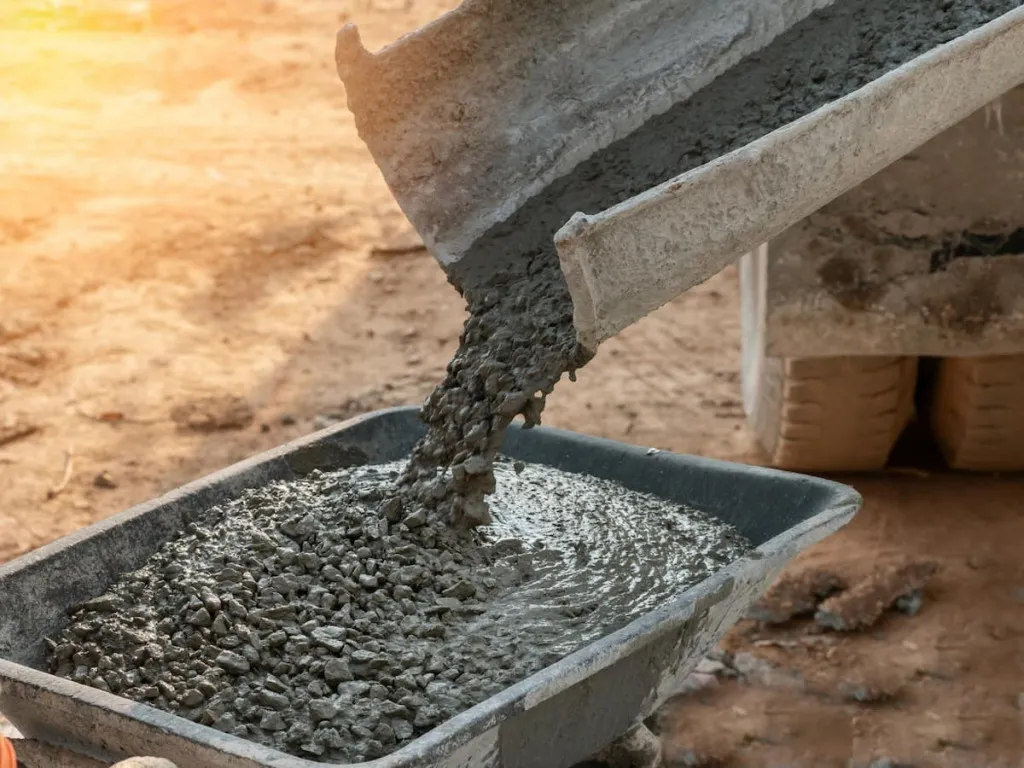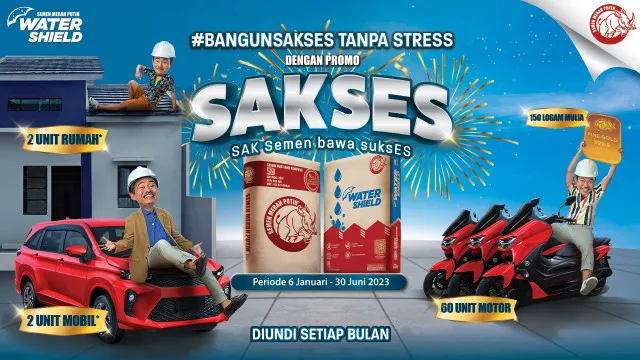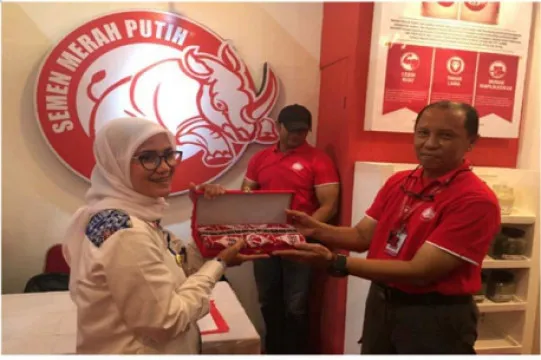Shotcrete is one of the modern construction technologies widely used to reinforce slopes, cliffs, and even build retaining walls. This method is very suitable for Indonesia's complex natural conditions, such as cliffs and rocky slopes scattered across various regions.
This type of soil structure is prone to landslides, especially during the rainy season or when additional loads are placed on top of it. In addition to functioning as a protector for slopes and cliffs, shotcrete is also commonly applied in projects such as tunnels, underground structures, and retaining walls.
This article will discuss further the definition of shotcrete, its types, and its various advantages in the world of construction.
What Is Shotcrete?
Shotcrete is a method of applying liquid concrete that is sprayed onto a surface using high pressure or pneumatics. Its composition is similar to ordinary concrete, which is a mixture of cement, water, sand, or gravel up to 1.2 cm in size, as well as additional materials, such as reinforcing fibers, chemicals, and fine materials to improve quality.
This method was invented by Carl Ethan Akeley in 1910. When the concrete is sprayed, the impact energy automatically compacts the concrete without the need for manual compaction. Shotcrete can be applied using a wet or dry mixing system, either mechanically or manually, depending on the project construction requirements.
This technique is effective on various types of surfaces, such as soil, rock, old concrete, and steep slopes. Shotcrete is widely used to reinforce slopes and build retaining walls to prevent landslides caused by rainwater, soil loads, or other additional loads. Its main advantages are its fast hardening process and high compressive strength.
Types of Shotcrete
Shotcrete is divided into two types based on the mixing method, namely wet shotcrete and dry shotcrete. Both have differences in the application process, speed of work, and types of projects that are suitable. Here is a brief explanation.
1. Wet Shotcrete
Wet shotcrete is a method in which a concrete mixture containing water, sand, cement, and aggregates is prepared in advance before entering the pump or machine. Once ready, this mixture is sprayed onto the surface using air pressure from a compressor.
This method has the advantage of minimal dust being generated during the application process because the water is already mixed in beforehand. Wet shotcrete is ideal for large-scale projects, such as tunnel construction, swimming pools, or massive building structures.
Read also: 17 Types of Foundations in Construction and How to Choose Them
2. Dry Shotcrete
Dry shotcrete is a method in which a dry mixture of sand, cement, and aggregate is fed through a hose, then water is added at the nozzle before being sprayed onto the surface.
The water content can be adjusted during application, making it more flexible for small projects or repairs. This method also allows the addition of additives such as fibers to strengthen the concrete.
Stages of Shotcrete Application
For strong and durable results, the shotcrete application process must be carried out in stages and according to procedure. Here are the steps:
- Surface preparation: Clean the surface of dirt or loose material that could interfere with the adhesion of the concrete.
- Drainage creation: Before spraying, a drain strip made of non-woven geotextile and PVC pipes is installed as a drainage hole to facilitate water drainage.
- Wire mesh installation: Wire mesh is installed using special nails and concrete decking to maintain its distance from the ground. The purpose is to prevent cracking and enhance the strength of the sprayed concrete structure.
- Shotcrete process: Spraying is done from top to bottom to avoid material bounce or rebound. The nozzle is directed perpendicular to the surface at a distance of about 60–100 cm.
- Curing: After application is complete, the shotcrete surface must be kept moist for at least 7 days for maximum strength.
The Advantages of Shotcrete
Shotcrete is widely chosen in construction projects because it offers various advantages that support work efficiency and quality. Here are some of its advantages:
- Time and cost efficient: The application process is fast and does not require large formwork, saving labor and project costs.
- Flexible on various surfaces: Shotcrete can be applied to flat, sloped, curved, and irregular surfaces.
- Strong material bond: High-pressure spraying makes the concrete adhere tightly and minimizes voids.
- No complex formwork: Additional formwork is not always required, especially on soil or rock surfaces.
- Versatile: Suitable for various purposes, from main structures and surface coatings to decorative elements.
- Strong and dense: The final result has high density and can withstand great pressure, ideal for durable structures.
Read also: Strauss Pile Foundation: Method, Advantages, & Disadvantages
The Disadvantages of Shotcrete
Despite its many advantages, shotcrete also has several disadvantages that need to be considered before use. Here are some of the challenges:
- High equipment costs: The use of shotcrete machines requires a significant initial investment.
- Material waste: During application, some of the material can bounce off and be wasted, especially if the operator is inexperienced.
- The quality is not always consistent: There is a risk of honeycombing, irregular thickness, and delamination if it is not done correctly.
- Prone to shrinkage and cracking: Specific attention must be paid to the curing process and mix design to prevent the concrete from shrinking or cracking.
- Requires skilled labor: To achieve maximum results, shotcrete must be applied by well-trained operators.
Why Is Shotcrete Widely Used in Construction?
Shotcrete is a method of spraying concrete using high-pressure equipment to strengthen an area and prevent landslides. This technique is widely chosen because the hardening process is relatively fast, taking about an hour with the help of additives, and it can produce high compressive strength.
Within 1–6 hours, surfaces sprayed with shotcrete can even withstand impacts from heavy equipment, such as wheel loaders, and in certain conditions, can withstand explosion vibrations. Because of these advantages, shotcrete is often used in underground mining projects, highway cliffs, and dam construction.
That is the complete explanation of shotcrete, from its definition and types to its advantages in the world of construction. With its ability to enhance slopes, cliffs, and underground structures such as tunnels, this method is an important solution in construction projects in various difficult terrains.
Given shotcrete's close reliance on road infrastructure and landslide-prone areas, the need for high-quality concrete materials becomes crucial. To address this need, Semen Merah Putih offers efficient and high-quality road construction solutions through its reliable products.
For ready-mix and precast concrete, you can rely on Semen Merah Putih ULTRAMIX-G, a Portland cement with optimal strength and ease of workability. Meanwhile, for projects that require high-density casting results and maximum compressive strength, Semen Merah Putih SUPERMIX is the ideal choice because of its formula that supports the quality of fresh and durable concrete.
With this range of premium products, Semen Merah Putih is ready to support various road construction projects, from highways, parking areas, runways, to toll roads, ensuring faster, more cost-effective, and high-quality results.
Planning a construction project? Discover the best road construction solutions with Semen Merah Putih and choose the product that perfectly suits your needs. Contact us now for more information!
Read also: Chicken Claws Foundation: A Crucial Structural Component



